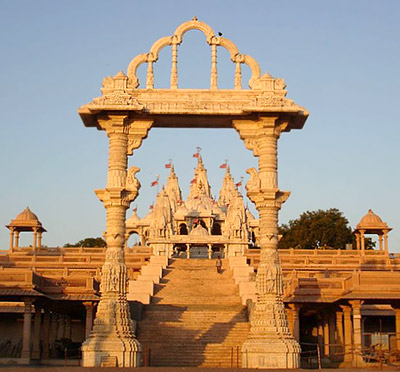 Gadhada is a town in Bhavnagar district of the western state of India, Gujarat. Bhavnagar, the district headquarters is situated in the west of Gadhada. Gadhada is well connected to the other parts in the state; Botad Junction Railway Station is the nearest railway station and the Rajkot Airport is the nearest airport. Botad, Dadva, Vallabhipur and Babra are the neighbouring towns. Gadhada is located between 21.97° North latitude and 71.57° East longitude at a height of 104 metres (341 feet) above mean sea level.
Gadhada is a town in Bhavnagar district of the western state of India, Gujarat. Bhavnagar, the district headquarters is situated in the west of Gadhada. Gadhada is well connected to the other parts in the state; Botad Junction Railway Station is the nearest railway station and the Rajkot Airport is the nearest airport. Botad, Dadva, Vallabhipur and Babra are the neighbouring towns. Gadhada is located between 21.97° North latitude and 71.57° East longitude at a height of 104 metres (341 feet) above mean sea level.
According to the 2001 India census report, Gadhada had a population of 26,751 inhabitants. Males constitute 52% of the population and females constitute 48% of the population. In this town 16% of the population is less than six years of age. Gadhada has an average literacy rate of 62% which is higher than the national average literacy rate of 59.5%. The male literacy rate is 70% and the female literacy rate is 54%.
The major attraction in Gadhada is the Shri Swaminarayan Temple, which was built in 1829. The temple is an exquisite piece of architecture with a high pedestal, an assembly hall and large sarais. It is an important religious destination for the followers of the Swaminarayan faith. Bhagwan Swaminarayan who stayed here for twenty-eight years cast his halo of Divine aura on this place.



















